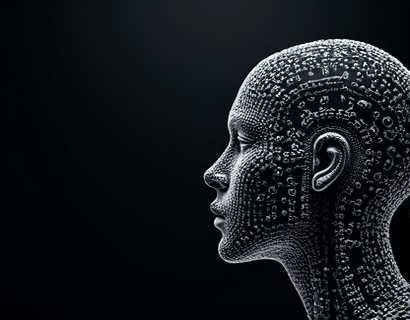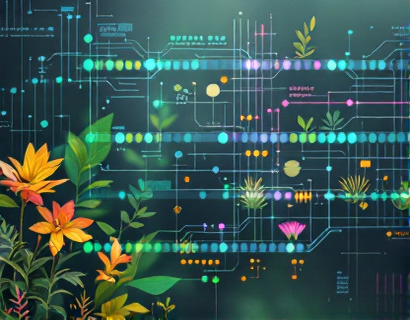Unlocking Device Potential: The Future of Open-Source Technology for Enhanced Performance and User-Centric Design
The landscape of technology is rapidly evolving, driven by the relentless pursuit of innovation and the democratization of access to advanced tools. At the heart of this transformation is the open-source movement, which has revolutionized the way software is developed, distributed, and used. This article delves into the future of device performance and user experience through the lens of open-source technology, highlighting the benefits of an open operating system that prioritizes flexibility, customization, and seamless integration across devices.
Open-source technology has long been a cornerstone of innovation, fostering a collaborative environment where developers from around the world can contribute to a shared codebase. This collaborative approach not only accelerates the development process but also ensures that the software remains adaptable and resilient. For device performance and user experience, this means a system that is constantly evolving to meet the needs of users, rather than being locked into a proprietary and static framework.
The concept of an open operating system for devices represents a significant leap forward in this domain. Unlike traditional operating systems that are closed and controlled by a single entity, an open operating system invites contributions from a diverse community of developers. This openness leads to several key advantages, starting with unparalleled flexibility. Users are no longer bound by the limitations imposed by a closed system; instead, they can tailor the operating system to their specific needs and preferences.
Customization is another cornerstone of this open operating system. Users can modify every aspect of the system, from the user interface to core functionalities. This level of control empowers users to create a personalized experience that aligns perfectly with their workflow and preferences. For instance, developers can create custom desktop environments, while power users can tweak system settings to optimize performance for specific tasks.
Seamless integration across devices is another critical feature of this open operating system. In an era where users interact with multiple devices throughout their day, from smartphones and tablets to laptops and desktops, a cohesive experience is essential. An open operating system ensures that applications and data can flow smoothly between devices, eliminating the frustration of fragmented experiences. This interoperability is achieved through standardized protocols and APIs, making it easier for developers to create applications that work seamlessly across different platforms.
The benefits of an open operating system extend beyond flexibility and customization to enhanced performance. By leveraging contributions from a global community, the system can incorporate cutting-edge technologies and optimizations that might not be possible within a closed environment. Performance improvements are continuously integrated, ensuring that users always have access to the most efficient and reliable system possible. This is particularly important for resource-intensive tasks such as video editing, 3D rendering, and large-scale data analysis, where every millisecond counts.
Moreover, the open nature of this operating system fosters a culture of transparency and trust. Users can review the source code, understand how the system works, and contribute to its security. This transparency is crucial in an age where data privacy and security are paramount concerns. By allowing the community to scrutinize the code, potential vulnerabilities can be identified and addressed more quickly, reducing the risk of security breaches.
The user-centric design of this open operating system is another significant advantage. Traditional operating systems often prioritize the needs of the developer or the company behind the product, sometimes at the expense of the end-user. In contrast, an open operating system is driven by the collective input of its users. This user-centric approach ensures that the system evolves in a direction that truly benefits those who use it. Features and improvements are prioritized based on real-world feedback, leading to a more intuitive and user-friendly experience.
One of the most compelling aspects of this open operating system is its potential to make advanced technology accessible to a broader audience. High-performance computing and sophisticated software tools are often associated with high costs and complex setup processes. However, an open operating system can democratize access to these resources by providing a robust and user-friendly foundation. Users, regardless of their technical expertise, can leverage powerful tools and capabilities without needing to delve deep into the underlying complexities.
For tech enthusiasts and open-source advocates, this open operating system represents a golden opportunity to contribute to a project that has the potential to reshape the technology landscape. By participating in the development process, contributors can gain valuable experience, collaborate with like-minded individuals, and help create a system that reflects the collective wisdom of the community. This collaborative environment not only accelerates innovation but also builds a strong, supportive ecosystem around the technology.
The impact of this open operating system on various industries cannot be overstated. In the realm of education, for example, students and educators can benefit from a system that is both powerful and easy to use. Schools and universities can deploy a consistent and reliable platform that supports a wide range of educational activities, from basic computing to advanced research. In the business world, companies can harness the flexibility and customization options to streamline operations, enhance productivity, and foster innovation.
In the creative sector, artists, designers, and developers can exploit the full potential of this open operating system to bring their visions to life. The ability to customize every aspect of the environment allows for the creation of unique tools and workflows that cater to specific creative needs. This level of control and flexibility is invaluable in industries where creativity and efficiency are equally important.
Looking ahead, the future of this open operating system is bright, with several exciting developments on the horizon. One area of focus will be the integration of artificial intelligence and machine learning capabilities directly into the system. This will enable more intelligent and adaptive behaviors, such as predictive performance tuning, automated troubleshooting, and personalized user interfaces. AI-driven features will not only enhance the user experience but also reduce the learning curve for new users, making the system more approachable.
Another key area of development is the expansion of hardware support. As new devices and form factors emerge, the operating system will need to adapt to ensure seamless compatibility and performance. This includes support for emerging technologies such as quantum computing, edge devices, and the Internet of Things (IoT). By maintaining a flexible and modular architecture, the system can easily incorporate these advancements, keeping users at the forefront of technological progress.
Furthermore, the open nature of the operating system will continue to attract a diverse range of contributors, from individual developers to large organizations. This diversity ensures a rich and varied input, leading to a more robust and versatile system. Partnerships with educational institutions, research labs, and tech companies will further accelerate innovation, bringing cutting-edge research and industry expertise into the development process.
In conclusion, the future of device performance and user experience is being shaped by the open-source movement, with an open operating system leading the charge. By offering unparalleled flexibility, extensive customization, and seamless integration, this system is poised to make advanced technology accessible and efficient for all users. Whether you are a tech enthusiast, a professional, or simply someone who values control and personalization, this open operating system represents a exciting new frontier in computing. As the community continues to grow and evolve, the possibilities for innovation and improvement are endless.










































